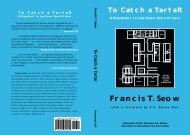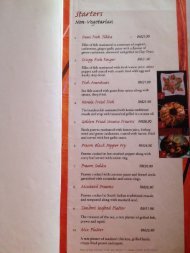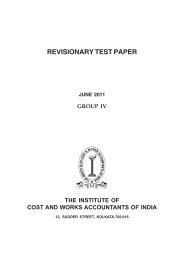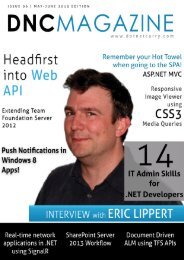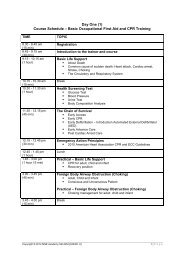Eric lippert - Amazon Web Services
Eric lippert - Amazon Web Services
Eric lippert - Amazon Web Services
Create successful ePaper yourself
Turn your PDF publications into a flip-book with our unique Google optimized e-Paper software.
Connecting to the Hub<br />
We can try this out in the same application as we have the server<br />
running, by adding a new HTML page for adding and displaying<br />
customers. Add a file called Client.html and add the following to<br />
the header section to include the SignalR generated JavaScript,<br />
jQuery and the SignalR common JavaScript:<br />
<br />
<br />
<br />
<br />
The actual form will look very simple, it will only have two fields<br />
and two buttons like you can see below in figure 5<br />
myHub.server.all().done(function (result) {<br />
var resultDiv = $(“#result”);<br />
resultDiv.html(“”);<br />
resultDiv.append(“”);<br />
$(result).each(function (index, item) {<br />
resultDiv.append(“(“+item.Id+”) “+ item.Name +<br />
””);<br />
});<br />
resultDiv.append(“”);<br />
})<br />
});<br />
This hooks up a click handler to the refresh button and if we have<br />
any elements in the customer array, it will be displayed nicely on<br />
the page. In order to test that, we need to add some elements. This<br />
can be done in an equal manner by running the add() method we<br />
created before and passing it a JSON object like this:<br />
The HTML itself is equally simple:<br />
<br />
Id:<br />
Name: <br />
<br />
<br />
<br />
<br />
<br />
$(“#add”).click(function () {<br />
myHub.server.add({ id: $(“#id”).val(), name: $(“#name”).<br />
val() });<br />
});<br />
Last but not least, we can initiate the connection to the server:<br />
$.connection.hub.start();<br />
Run this and ‘Add’ some names and click on Refresh. This will give<br />
us an archaic looking list as we can see in Figure 6.<br />
When the document has finished loading, we want to hook up<br />
SignalR and perform some magic. First we get a reference to<br />
myHubServer through the $.connection object like this:<br />
var myHub = $.connection.myHubServer;<br />
We can then use myHub to send and receive messages from the<br />
server. For instance, in order to call all() we simply do this:<br />
myHub.server.all();<br />
There’s a common pattern here so we can append the method<br />
done() after our calls, meaning that once all is finished, we can<br />
execute a method with the result data. To do this and then add a<br />
new list with the items returned from the server to the page, we<br />
can simply do the following:<br />
$(“#refresh”).click(function () {<br />
Notice what happens if you open up a new tab in your browser,<br />
navigate to the same html file and hit refresh, you’ll get a list of<br />
all the names! Aside from the network latency and other factors,<br />
this is so far a one-way-push-real-time network application!<br />
What about if we want to notify the clients once a new customer<br />
has been added and refresh automatically We could do this quite<br />
easily. Let’s start off by adding an event handler on the client side<br />
called refreshCustomers like this:<br />
myHub.client.refreshCustomers = function (result) {<br />
// Same code here as refresh click handler<br />
};<br />
DNcmagazine www.dotnetcurry.com | 19



